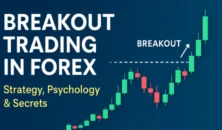- Introduction
- 1. Understanding Price Classification in Forex
- 2. Top Tools for Splitting Charts in 2025
- 3. Key Market Structure Concepts for Trade Classification
- 4. Advanced Volume Analysis Techniques
- 5. Risk Management Strategies for Forex Trading
- 6. Enhancing Accuracy with Currency Strength Analysis
- 7. Best Practices for Combining Tools & Strategies
- Conclusion
- Frequently Asked Questions

Introduction
Price classification in Forex trading helps traders determine when to buy or sell based on market trends and technical indicators. In 2025, new tools and AI-powered insights make it easier to split charts for precise trade decisions. Let’s explore the latest techniques to improve your trading success.
1. Understanding Price Classification in Forex
Price classification involves analyzing price movement patterns to differentiate between buy and sell signals. The key elements include:
- Support and Resistance Levels: Identify critical price points where reversals may occur.
- Trend Analysis: Recognize uptrends, downtrends, and sideways movements.
- Market Structure: Determine the market’s behavior to anticipate price shifts.
2. Top Tools for Splitting Charts in 2025
To make informed buy/sell decisions, traders use cutting-edge tools, including:
- AI-Powered Charting Software: Automates pattern recognition and trend analysis.
- Multi-Timeframe Analysis Tools: Provides insights from different chart timeframes.
- Updated Oscillators & Indicators: Advanced RSI, MACD, and Bollinger Bands reduce false signals.
- Sentiment Analysis Tools: Tracks news and social media trends to gauge market sentiment.
How to Improve Trading Strategy: Probability of the Next Move
3. Key Market Structure Concepts for Trade Classification
Market structure analysis helps traders identify potential trade opportunities:
- Break of Structure (BoS): Confirms a trend continuation when new highs/lows form.
- Change of Character (CHoCH): Indicates a shift in market momentum and possible reversals.
4. Advanced Volume Analysis Techniques
Volume analysis validates price movements and ensures stronger trade signals:
- High Volume with Uptrend: Confirms strong buying pressure.
- Divergence Between Volume & Price: Suggests potential trend reversals.
5. Risk Management Strategies for Forex Trading
Protecting capital is crucial in forex trading. Use these strategies:
- Stop-Loss & Take-Profit Levels: Define risk-reward ratios before entering a trade.
- Position Sizing Tools: Adjust trade sizes based on account balance and market volatility.
6. Enhancing Accuracy with Currency Strength Analysis
Currency Strength Indicators (CSI) help classify price movements effectively:
- Strong vs. Weak Currency Pairs: Trade in favor of the stronger currency.
- Relative Currency Strength (RCS): Evaluates multiple currency pairs for better decision-making.
7. Best Practices for Combining Tools & Strategies
To maximize accuracy, combine multiple tools:
- AI-powered charting for pattern recognition.
- Multi-timeframe analysis for broader trends.
- Sentiment tracking for better market understanding.
- Volume analysis for trade confirmation.
Conclusion
By leveraging the latest tools and market structure concepts, traders can enhance price classification accuracy in Forex trading. Implement these 2025 strategies to split charts effectively for buy and sell trades, reducing risks and increasing profitability.
Frequently Asked Questions
BOS stands for Break of Structure, a key signal in price action trading. To identify it:
Look for a clear shift in market direction (e.g. higher high turning into a lower low)
Use structure points (support/resistance) as reference
Confirm with volume or liquidity sweep if needed
📘 BOS confirms that a trend has ended and a new one has likely begun — it’s the backbone of smart price classification.
Forex trading is classified into three key price behaviors based on your 2025 method:
Impulse Moves: Fast, one-directional price movement with strong momentum
Corrective Moves: Slow pullbacks or consolidations that follow impulses
Liquidity Grabs: Fakeouts or traps where price takes out stop losses before reversing
🧠 Understanding these classifications helps traders enter high-probability trades with confidence.
No indicator works perfectly alone — but the most powerful ones confirm price action. In 2025, the top choices are:
Volume Profile (for institutional zones)
Fibonacci Levels (for retracements)
200 EMA (for long-term trend bias)
🔍 Combine indicators with structure-based classification for the best results.
The 90% rule suggests:
“90% of traders lose 90% of their capital in 90 days.”
This shocking stat highlights the importance of risk management, education, and patience in trading.
⚠️ Want to beat the 90%? Avoid overtrading, use stop-losses, and trade with a clear plan.
The 5-3-1 Rule helps simplify your trading:
5 currency pairs
3 strategies max
1 time to trade each day
This keeps your focus sharp and eliminates confusion.
✅ Less is more in forex — consistency beats complexity.
The golden rule is simple:
“Protect your capital first. Profits come second.”
Never risk more than 1–2% per trade. Always have a stop-loss. Let your edge play out over time.
🛡️ Your account survival is the foundation of long-term success.
Discipline is the #1 rule. Even with a perfect system, lack of discipline leads to failure. That means:
Following your plan
Not revenge trading
Sticking to your risk parameters
💬 Strategy gets you in. Discipline keeps you in the game.
Here are 3 ways:
Stick to a set number of trades per day
Journal every trade to build awareness
Trade only when your price classification criteria are fully met
🚫 Overtrading is often a result of emotion, not opportunity.
To trade XAU/USD (gold):
With 0.01 lot size, start with $200–$500 minimum
With proper leverage (1:100) and tight risk management, $500+ is safer
Use brokers offering micro lots for smaller capital
⚖️ Gold is volatile — only trade with money you can afford to risk.







